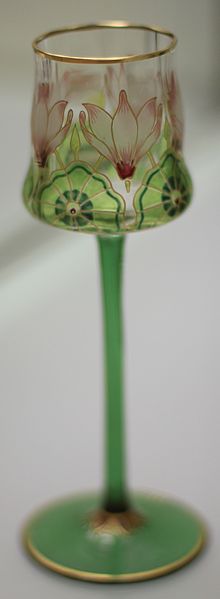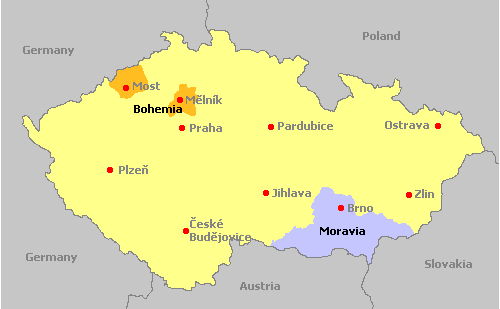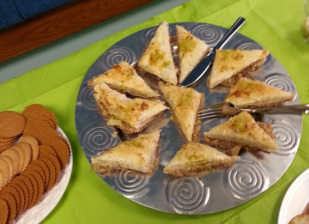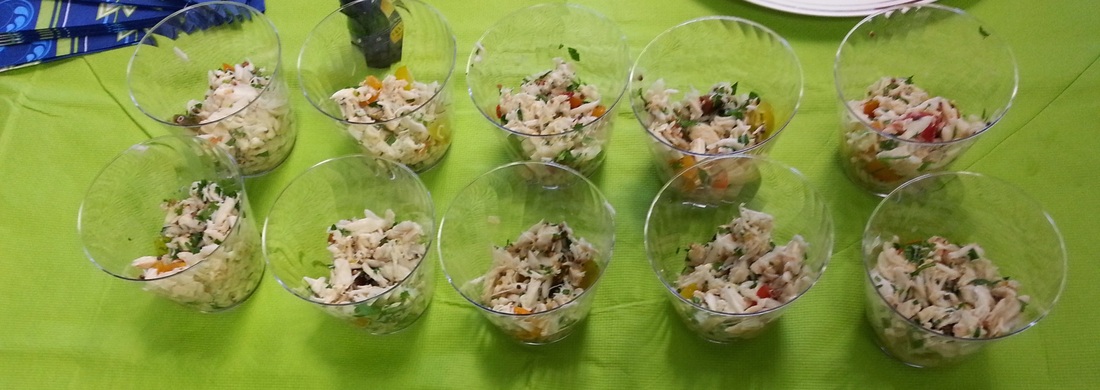 Wines from the Czech Republic are a secret no more. Wines from the Czech Republic are a secret no more. Do you know that a wine from the Czech Republic was selected the “Best White Wine” at the prestigious 2014 San Francisco International Wine Competition? NOTE: All wines tasted at this event were provided by the sponsoring wineries. Please see my page ' Submissions, Reviews, Invitations & Disclaimers'. It seems the ‘cat is out of the bag’ when it comes to the quality and character of these delicious wines from eastern Europe, thanks to the Petr Vacenovsky 2013 Riesling winning double gold and best of show at the competition. Now, it used to be when I thought of this historic nation, I would think of handcrafted crystal, intricate garnet jewelry, a treasure-trove of culture and architecture, and of course, Pilsner, but after having an opportunity to try a selection of Czech wines, I can now add vino to the list. Viticulture and wine are nothing new to this region of the world. Like many parts of Europe, the Romans brought the vine to the area and are credited with introducing Grüner Veltliner and Welschriesling which are still grown today. During the Middle Ages the industry really took hold mostly due to the power of the monasteries. Importing grapes from France and Germany, they began to establish vineyard designations and winemaking rules as far back as 1309. Although the territory was conquered and occupied over the centuries, vineyards here supplied wines for the aristocracy of Europe until phylloxera destroyed much of the vines at the turn of the 19th to 20th century. Today, the Czech Republic has a small but thriving wine industry. The majority of the vineyards (96%) are located in the southern region of Moravia ( Mo-rahv-EE-ah) which is just north of the well known Austrian wine region, Weinviertel. A small number of vineyards may be found in the northern region of Bohemia which is on the same latitude as the Rheingau area of neighboring Germany. The nation itself is landlocked and the terrain is predominately rolling hills, with the White Carpathian mountains sheltering the wine regions of the south. Soil types range from rich dark clay to gravel, marl and limestone. There are are about 18,000 winemakers in the country - many of them extremely small with production of only a few barrels - continuing the age old traditions of local winemaking. They make wines for their own palates - bone dry and full of crispy minerality with hints of spiciness. It’s not uncommon to see a group of local winemakers getting together on a Saturday afternoon to sip and critique each others product! The majority of production is white wine - around 60% - with red and rosé making up the balance. With larger producers looking to export more of their product, they are now producing wines from dry to off dry as well as the popular sweet, dessert ’straw wines’ . (For more on this wine style, click here) Many of the grapes grown here are familiar names:, Chardonnay, Pinot Blanc, Pinot Gris, Pinot Noir and Cabernet Sauvignon. Just as fabulous, but perhaps not household names (yet!) are: Müller-Thurgau, Blaufränkisch (Frankovka), St. Laurent (Svatovavnnecké) and Welschriesling (Ryzlink Vlassky). A system of quality designation, based on the French AOC and Austrian DAC, regulates things such as where the grapes are grown, hand harvesting, oak barrel usage, alcohol levels and many other factors. This ensures that the wines labeled with a regional VOC (Vina Originální Certifikace) mark have a guaranteed level of quality and reflect the best attributes of Czech wines.
There’s a distinctive feature that can’t go un-noticed - the absolutely captivating labels on the Vino z Czech vintages. Every one bears artwork by the famous Art Nouveau artist Alphonse Mucha. These sensuous depictions of female beauty are not only eye-catching, but also reflect the artistic integrity of the wines themselves. (For more on the Art Nouveau movement in the Czech Republic, see below)  Spicy Grüner Veltliner Spicy Grüner Veltliner Our first wine was the Grüner Veltliner Michlovsky 2011 ($16) - Fragrant dried apricot, sweet grass and white pepper with ripe red apple and lemon balm on the palate - showing a slight hint of effervescense. Clean and minerally, it paired well with a spicy crab salad and the bacon and onion tart.  Wine & Food - perfect! Wine & Food - perfect! Next, Welschriesling Spielberg 2013 ($23). This variety is not related to the famous Riesling grape, even though the names are similar. All white flower blossoms, sweet grass and honey with touches of pepper and lemon peel. Great paired with that onion tart, and gobs of brie.  Czech Pinot Blanc Czech Pinot Blanc Two examples of Pinot Blanc followed. Here’s a hint - if you enjoy Pinot Gris/Grigio, give their ‘relative’ Pinot Blanc a try! Pinot Blanc Vyskocil 2009 ($23) showed unexpected tropical character - kumquat, perfumey guava, ripe peaches, light honeysuckle and spicy clove/nutmeg. Paired beautifully with brie, Comte cheeses and sushi - especially the cucumber roll.  Alphonse Mucha labels Alphonse Mucha labels Pinot Blanc Spielberg 2009 ($34) was quite different - lots of ripe apple and stone fruits with an abundance of dusty rose aromas. Off dry, the finish was long, clean and supple with more baked apple and honey notes. Once again, it was terrific with the sushi and the onion tart, too.  Refreshing Riesling Refreshing Riesling Now, on to Riesling Michlovsky 2011 ($19) Classic Riesling with crunchy green apples, linden flowers and a passing whiff of petrol! Plump apricots on the palate with a slight, refreshing touch of ‘fizz’. Perfect with the sushi, Persian dolmas with rice, veg and dill and, believe it or not, a walnut baklava!  Rivaner aka Müller-Thurgau Rivaner aka Müller-Thurgau Rivaner Valtice 2011 ($16) Rivaner is the local name for Müller-Thurgau and, if you enjoy off-dry wines from the Rhine, this will be your new favorite! Soft, supple apple and ripe, ripe pear flavors make this an easy sipping wine. I loved it with the crab salad and the sushi and the hot, spicy Sriracha chicken wings found a refreshing friend in this wine.  Great with food or on its own. Great with food or on its own. Rouci Stapelton and Springr 2007 ($40) A blend of Pinot Noir and St. Laurent (the most widely planted red grape in the Czech Republic - also popular in Austria). Earthy and velvety, red plum with caramel, black pepper and milk chocolate undertones, the palate is full with dried strawberry, black raspberry and ripe rich cherry. If you like a fruity, lighter red wine like Beaujolais, this is right up your alley. I loved it with a spicy ginger snap cookie, the spicy wings and Comte cheese. Super sipper, too.  Blauer Portugieser Blauer Portugieser Our final wine was a ‘mystery’ treat, selected by the Sommelier back in the Czech Republic. Modry Portugal 2012 from Vinarstvi Vyskocil is made with the grape variety Blauer Portugieser. The deep garnet color is reflected in the nose and on the palate - lots of super juicy, purple fruits and soft baking spices, red licorice and black plum - reminiscent of a Christmas Pudding in a glass.  Hair of the dog! Hair of the dog! To finish the event in true Czech tradition, we each had a ‘wee dram’ of a local digesif called Becherovka. And a tiny sip is all that’s needed. Although the locals tout this as a ‘cure all’ and a great pick me up for the ‘morning after’, I think I’ll stick with my new-found friends - the delicious and intriguing wines of the Czech Republic. NOTE: All wines tasted at this event were provided by the sponsoring wineries. Please see my page ' Submissions, Reviews, Invitations & Disclaimers'. What is Art Nouveau? By Øyvind Holmstad (Own work) wikimedia.org By Øyvind Holmstad (Own work) wikimedia.org The distinctive designs of world renowned Czech artist Alphonse Mucha are a true representation of the Art Nouveau style. This undulating, sensuous artistic movement began in Europe in the late 1800’s and continued into the early years of the 20th century. Using nature’s graceful, flowing lines as it’s inspiration, the style infiltrated all the arts. From architecture to fashion, from everyday household items to the painting, sculpture and art glass, “The New Art” took the world by storm. Mucha was, and continues to be, one of the most recognizable proponents of the period and his homeland of the Czech Republic has respected and preserved many architectural representations. For more information: www.czechtourism/a/art-nouveau/
0 Comments
|
AuthorWine lover, educator and writer. Archives
March 2017
Categories
All
|









 RSS Feed
RSS Feed

